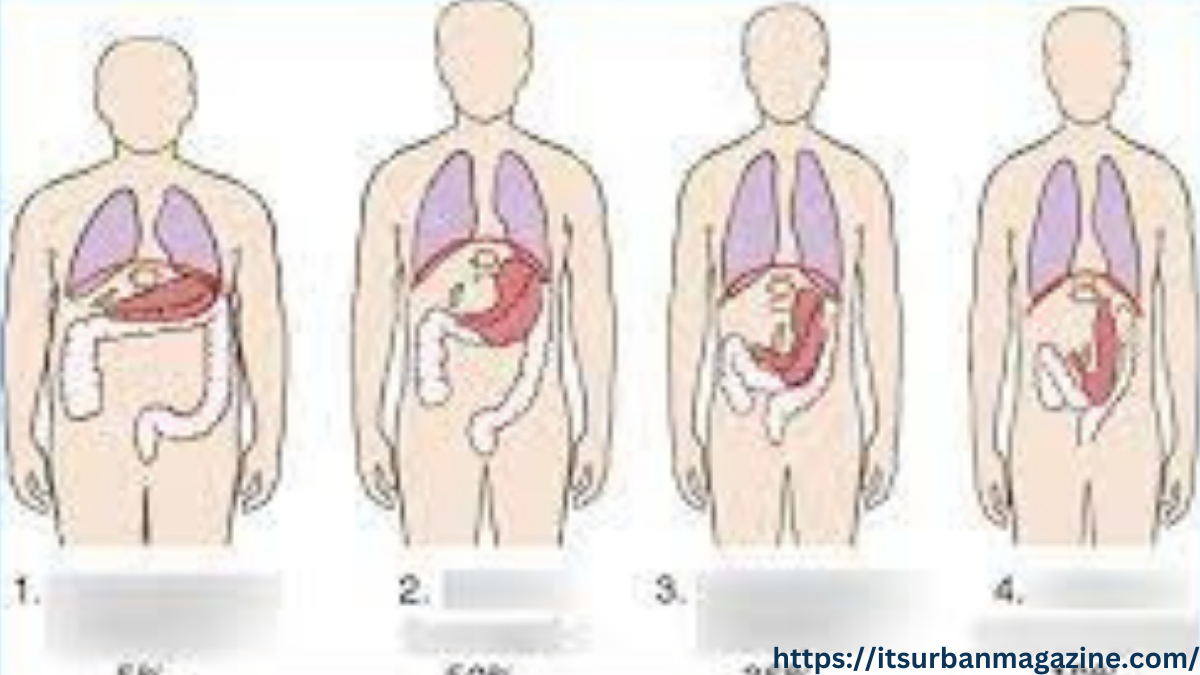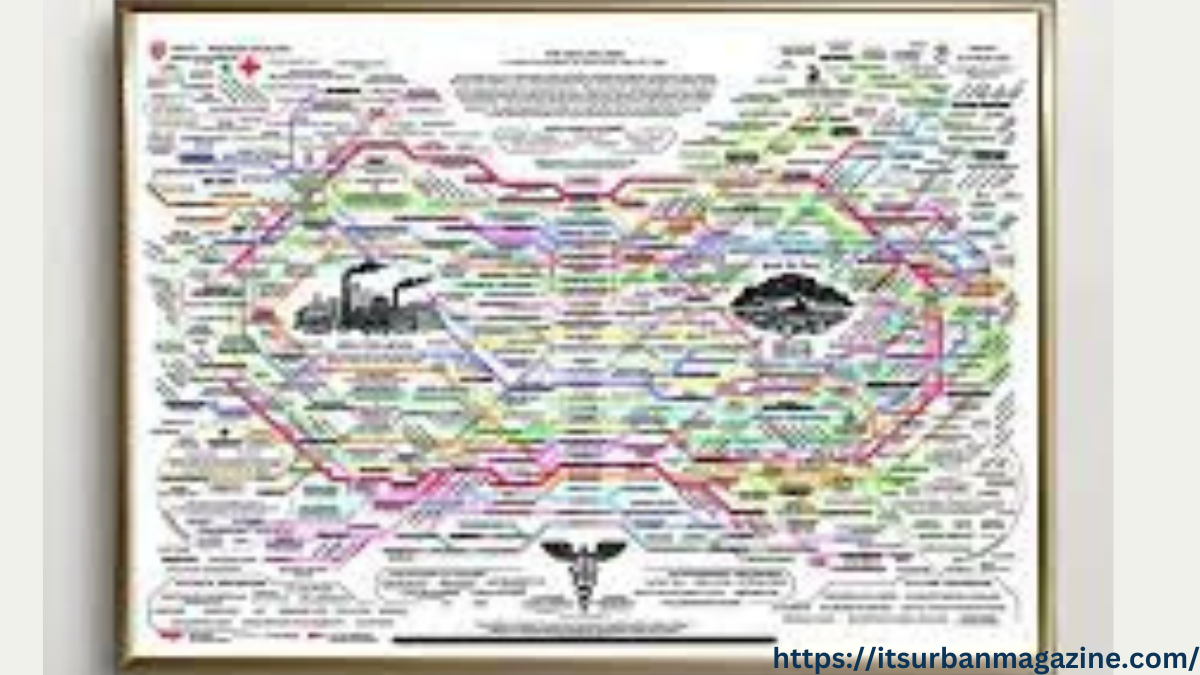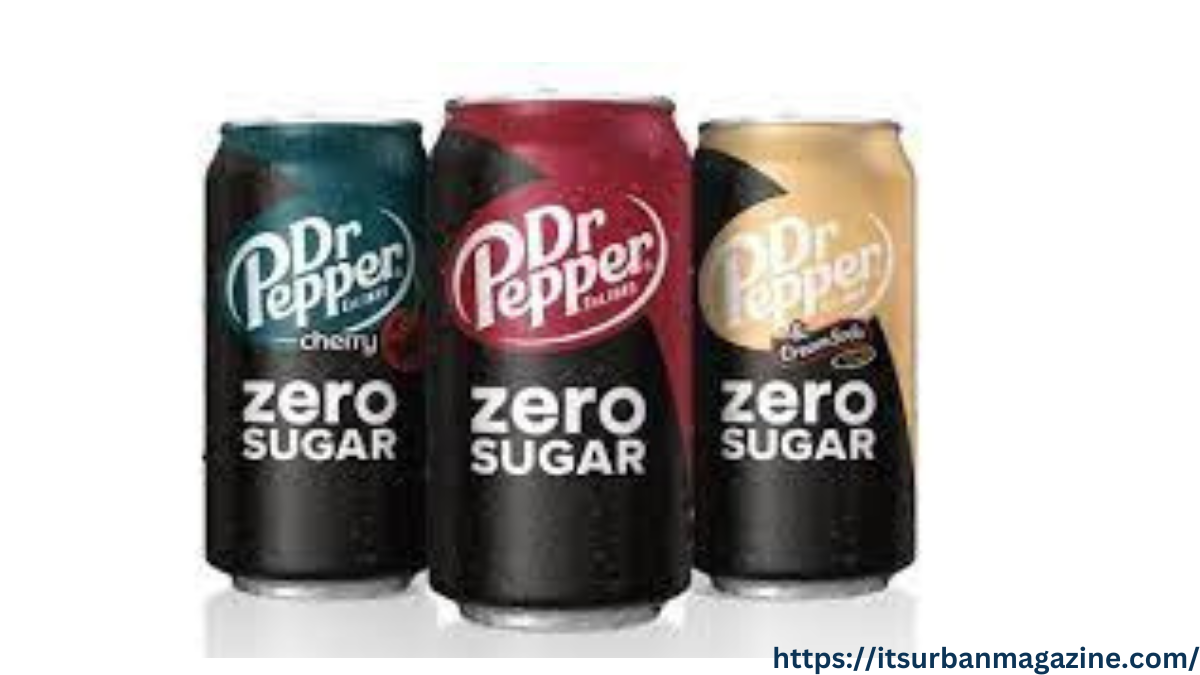HEALTH&FITNESS
Vapor 100: Unlocking the Secrets to a Smoke-Free Future

In today’s more health-conscious society, people are actively looking for safer ways to satisfy their nicotine fix. The “Vapor 100” is one such option that has exploded in popularity. What is Vapor 100? How does it work? Why is it so popular among those trying to quit smoking? All of these questions and more will be answered in this post. Come along as we explore the possibilities of a world without cigarettes.
What is Vapor 100?
In recent years, Vapor 100 has emerged as a game-changing substitute for tobacco cigarettes. Vapor 100 is a device that simulates the experience of smoking without the burning of tobacco like ordinary cigarettes do by vaporizing a nicotine-infused liquid.
How Does Vapor 100 Work?
Vapor 100’s workings are straightforward yet novel at the same time. When turned on, the device’s heating element heats up, vaporizing the e-liquid in the cartridge. Inhaling this vapor provides the user with nicotine without the risk of tar and other toxins contained in conventional cigarettes.
Advantages of Vapor 100
Reduced Harm
Vapor 100’s capacity to lessen damage is a major benefit. Inhaling several toxic compounds and carcinogens while smoking traditionally is hazardous to one’s health. Because Vapor 100 prevents combustion, this threat is null and void.
Smoking Cessation Aid
Vapor 100 has been shown to be helpful for people trying to kick the habit. Without the health risks of cigarettes, it satisfies the same hand-to-mouth motion and nicotine ingestion.
Variety of Flavors
Vapor 100 provides a variety of e-liquid flavors for its customers to choose from. Everyone may find a taste they like, from traditional tobacco to sweet fruit and dessert combinations.
Reduced Secondhand Smoke
Vapor_100 is a thoughtful alternative to traditional smoking because it creates almost no secondary smoke.
Is Vapor 100 Safe?
Vapor_100 may be less dangerous than smoking tobacco products, but it is still not risk-free.
Getting Started with Vapor 100
Choosing the Right Device
Vapor_100 users, before setting off on their adventure, must carefully consider which hardware will best serve their purposes. Vapor_100 devices range from basic pod systems to complex mods. When deciding, keep in mind your degree of expertise and personal preferences.
Selecting E-Liquids
E-liquids come in various nicotine strengths and flavors. Start with a nicotine level that matches your current smoking habits and explore different flavors to find your favorite.
Maintenance and Safety
The use of Vapor_100 devices requires strict adherence to all applicable safety and maintenance procedures. Make sure you take good care of your vaping equipment by cleaning it regularly, charging it as directed, and handling e-liquids with caution.
Conclusion
By delivering a safer alternative to tobacco cigarettes, Vapor 100 paves the way toward a smoke-free future. Vapor_100 use, like the adoption of any other lifestyle, requires consideration and maturity on the part of the user.
FAQs
Q. Is Vapor_100 suitable for people trying to quit smoking?
Yes, Vapor_100 can be an effective smoking cessation aid due to its similarity to smoking and the availability of various nicotine levels.
Q. Are there any age restrictions for using Vapor_100?
Yes, you must be of legal smoking age in your region to purchase and use Vapor_100 products.
Q. Are there any potential health risks associated with Vapor_100?
While it’s generally considered safer than traditional smoking, there are still potential health risks, particularly related to certain e-liquid ingredients. It’s essential to use Vapor_100 responsibly.
Q. Can Vapor_100 be used in non-smoking areas?
It depends on local regulations and policies. Some places allow vaping indoors, while others may have restrictions.
Q. How do I know which nicotine strength to choose?
Start with a nicotine strength that matches your current smoking habits. You can adjust the strength over time based on your needs and preferences.
HEALTH&FITNESS
Body Habitus: Understanding Your Unique Physique

Because of heredity, lifestyle, and environmental influences, human bodies vary in size and form. An individual’s body habitus is a major factor in defining their physical capabilities and susceptibility to certain health issues.
Understanding Different Body Types
Ectomorph
Ectomorphs usually have quick metabolisms and a slim, lean frame. Even if they consume a lot of food, they often struggle to acquire muscle mass and weight.
Mesomorph
Mesomorphs are distinguished by their innately muscular and athletic build. Compared to other body types, they often acquire muscle mass more readily and lose fat more easily.
Endomorph
Endomorphs tend to accumulate fat more readily and have a rounder, softer look. They should pay attention to their food and exercise habits since they can have trouble losing weight.
Factors Influencing Body Habitus
An individual’s body habitus is influenced by a number of variables, including lifestyle choices, nutrition, exercise, and heredity.
Genetics
Body type and metabolism are significantly influenced by genetic predispositions. The body’s distribution and storage of fat, as well as how it reacts to food and exercise, are all influenced by certain genes.
Diet and Nutrition
The food we eat has a direct effect on our general health and body composition. Preventing nutritional shortages and keeping a healthy body habit both depend on a well-balanced, nutrient-rich food.
Exercise and Physical Activity
Frequent exercise is essential for regulating weight, enhancing general wellbeing, and building and preserving muscular tone. Exercise programmes may help people reach their ideal body types by focusing on certain body parts.
Health Implications of Body Habitus
Extremes in body composition have been linked to a number of medical disorders, suggesting that the body habitus might have a substantial impact on health.
Obesity and Overweight
The chance of acquiring chronic illnesses including diabetes, heart disease, and hypertension is increased in those with excess body fat. Millions of individuals worldwide are impacted by obesity, which is also a major financial strain on healthcare systems.
Underweight and Malnutrition
Other negative health impacts of being underweight include immune system weakness, dietary deficits, and problems with reproduction. If left untreated, malnutrition—whether from insufficient dietary consumption or poor nutritional absorption—can result in life-threatening health issues.
Muscle Imbalances
Muscle imbalances may impact posture, gait, and general functioning when some muscle groups are noticeably weaker or more taut than others. By addressing these imbalances with focused exercise and stretching, one may enhance physical performance and reduce the risk of injury.
Achieving a Healthy Body Composition
A mix of good eating, consistent exercise, and lifestyle changes are needed to maintain a healthy body composition.
Balanced Diet
A range of nutrient-dense foods, such as fruits, vegetables, lean meats, whole grains, and healthy fats, should be a part of a balanced diet. To avoid overindulging and maintain a healthy weight, portion management and moderation are essential.
Regular Exercise Routine
Building and maintaining muscle mass, burning calories, and raising general fitness levels all depend on regular physical activity, which includes aerobic, strength, and flexibility activities.
Lifestyle Modifications
A healthy body habitus may be supported and general well-being can be promoted by adopting lifestyle modifications including obtaining adequate sleep, controlling stress, abstaining from tobacco and excessive alcohol use, and drinking enough of water.
Psychological Impact of Body Image
Problems with body image may have a big influence on mental health and self-worth, which can result in diseases like eating disorders and body dysmorphia.
Body Dysmorphia
Body dysmorphic disorder, or BDD, is a mental illness marked by an obsession with one’s perceived imperfections in appearance. People who suffer from body dysmorphic disorder (BDD) may exhibit obsessive behaviours including over-grooming, seeking confirmation, or getting cosmetic surgery to fix perceived flaws.
Self-Esteem and Confidence
Mental health and overall well-being are contingent upon having a positive body image and self-esteem. Acknowledging and appreciating one’s distinct physique may enhance self-assurance and diminish emotions of inadequacy and unease.
Cultural and Societal Influences on Body Perception
Social mores and cultural conceptions of beauty may have a big influence on how people feel about their bodies and what kind of beauty they should aim for.
Media Representation
The idea that being strong and lean equals success and attractiveness is one that the mainstream media often propagates as unrealistic beauty standards. Feelings of inadequateness and discontentment with one’s physique may result from this.
Beauty Standards
Cultural beliefs and aspirations of beauty are reflected in the enormous variations in standards of beauty that exist throughout communities and historical eras. Fostering diversity and inclusion, as well as challenging unattainable beauty standards, may help cultivate a more positive body image society.
Tips for Embracing Your Body
For general health and pleasure, it is imperative that you embrace and love your body. The following advice will help you develop a good body image:
Practice Self-Love
Concentrate on valuing and honouring your body for its fortitude, adaptability, and special attributes. Don’t compare yourself to other people; instead, be nice and compassionate to yourself.
Surround Yourself with Positive Influences
Be in the company of encouraging friends, family, and uplifted, empowering communities. Reduce your exposure to harmful influences, such as accounts on social media that uphold unattainable beauty ideals.
Focus on Health, Not Appearance
Put your health and well-being first instead than concentrating on getting a certain appearance. Take part in physical, mental, and spiritually nourishing activities and concentrate on feeling well inside and out.
Conclusion
The intricate interaction of genetic, environmental, and behavioural variables that determine our physical characteristics and well-being is known as body habitus. Developing a good body image and enhancing general wellbeing require that you recognise and accept your own body type.
FAQs
Q. What is the difference between body habitus and body composition?
Body habitus refers to the overall physical appearance and build of an individual, while body composition refers to the proportion of fat, muscle, and other tissues in the body.
Q. Can body habitus change over time?
Yes, body habitus can change in response to factors such as aging, changes in diet and exercise habits, and hormonal fluctuations.
Q. How can I determine my body type?
There are various methods for determining body type, including visual assessment, body measurements, and professional body composition analysis.
Q. Are certain body types more prone to certain health conditions?
While body type alone does not determine health outcomes, certain body types may be more susceptible to certain health conditions based on factors such as genetics, lifestyle, and environmental influences.
Q. What should I do if I’m unhappy with my body habitus?
If you’re unhappy with your body habitus, focus on making positive lifestyle changes such as adopting a balanced diet, engaging in regular exercise, and practicing self-love and acceptance.
HEALTH&FITNESS
The Healing Web: Connecting, Empowering, and Transforming

The idea of healing has expanded into the digital sphere in today’s fast-paced, globally linked society, beyond conventional bounds. The vast network of websites, groups, and other online resources devoted to fostering healing and well-being has come to be known as the “Healing Web,” and it has the potential to significantly impact positive change.
Understanding the Components
The many digital channels and platforms that promote connection and support are at the core of the Healing Web. Websites that provide tools and information on physical health, mental health, and personal development are essential for sharing important knowledge and advice. Social media platforms function as online communities where people may connect, exchange stories, and provide support to one another. Online groups and forums encourage deep relationships between people who have similar interests by building a feeling of community and camaraderie.
The Role of Content in Healing
The production and sharing of material with a healing theme is essential to the Healing Web’s efficacy. Content producers use a variety of platforms to empower, inspire, and educate their audience. These include guided meditations, informative articles, and motivational quotations and anecdotes. Healing material may raise spirits, inspire hope, and spur personal development by using the power of empathy and narrative.
Utilizing Technology for Healing
Technological developments have opened the door for novel approaches to wellbeing and healing. By removing obstacles to mental healthcare, telemedicine and virtual therapy platforms provide easy access to expert support and counselling services. Apps for mindfulness and meditation provide users the skills and strategies they need to handle stress, anxiety, and other mental health issues. Peer-led communities and online support groups provide a feeling of community and camaraderie, promoting empathy and comprehension among others going through comparable difficulties.
Building a Supportive Online Environment
Encouraging and caring online communities are critical to the Healing Web’s effectiveness. Online communities have the power to foster a feeling of acceptance and belonging by creating safe places where people feel at ease expressing their experiences. Encouraging empathy and connection via peer support, validation, and active listening strengthens the Healing Web’s bonds of trust and friendship.
Navigating Ethical Considerations
The Healing Web presents significant ethical questions in addition to providing a wealth of chances for assistance and connection. Maintaining people’s privacy and confidentiality is crucial, requiring close compliance with ethical standards and data protection laws. Maintaining integrity and trust within the Healing Web requires ensuring the validity and dependability of information given online. It is essential to handle delicate subjects like addiction, mental illness, and trauma with empathy and tact in order to prevent hurting others or making them uncomfortable.
Case Studies: Successful Healing Web Initiatives
The Healing Web’s potential has been used by a plethora of organisations and efforts to improve the lives of people and communities. These efforts demonstrate the transformational power of digital healing, ranging from peer-led support groups for trauma survivors to online therapy platforms that provide cheap mental health help. via using community support and technology. Through the removal of stigma and other obstacles to access, these organisations have been able to reach and make an influence on people worldwide.
Challenges and Opportunities
The Healing Web has a lot of promise, but it also has a lot of problems and barriers. Ensuring inclusiveness and accessibility for those with impairments or restricted internet access continues to be a major challenge. Education, activism, and destigmatization initiatives are necessary to dispel the stigma and scepticism surrounding digital healing approaches. Artificial intelligence and virtual reality are two innovative technologies in digital healthcare that provide great prospects to expand the Healing Web’s functionality and efficacy.
The Future of the Healing Web
With technology always evolving and society becoming more linked, the potential for the Healing Web are endless. Technological developments in machine learning and artificial intelligence have the potential to completely transform personalised healthcare. providing individualised assistance and interventions depending on each person’s needs and choices. The holistic approach to well-being that the therapeutic Web promotes may be further enhanced by fusing digital tools with traditional therapeutic techniques like mindfulness, yoga, and meditation.
Conclusion
The concept of the Healing Web signifies a fundamental change in the way we see health and wellness in the digital era. The Healing Web has the ability to connect, empower, and change lives on a worldwide scale by combining the power of technology, community, and compassion. As we persist in negotiating the intricacies of contemporary existence,. The Healing Web reminds us that healing is a journey of self-discovery and progress rather than just a destination. It is a light of hope and promise.
FAQs
Q. How can I contribute to the Healing Web?
You can contribute to the Healing Web by sharing your experiences, knowledge, and resources with others. Participating in online communities and support groups, and advocating for greater access to mental health and well-being resources.
Q. Is the Healing Web a replacement for traditional healing practices?
No, the Healing Web complements traditional healing practices by providing additional resources, support, and community connections. It is essential to integrate both traditional and digital healing approaches for holistic well-being.
Q. Are there any risks associated with participating in online communities and support groups?
While online communities and support groups can offer valuable support and connection. It is essential to exercise caution and discretion when sharing personal information online. Be mindful of privacy settings and avoid disclosing sensitive information to protect your safety and well-being.
Q. How can I find reliable and credible information on the Healing Web?
Look for reputable sources and organizations that specialize in mental health and well-being. Check for credentials, reviews, and testimonials to ensure the reliability and credibility of the information provided.
Q. What are some tips for fostering a supportive online environment?
Be respectful and empathetic towards others, listen actively, offer validation and encouragement, and refrain from judgment or criticism. Create a safe space where individuals feel comfortable sharing their experiences and seeking support without fear of stigma or discrimination.
HEALTH&FITNESS
Does Dr Pepper Have Caffeine?

Popular soft drink Dr. Pepper is well-known for its distinctive 23-flavor combination. Some people are worried about the caffeine level, even if many people like the flavour. Natural stimulants like caffeine are often present in a wide range of drinks, including sodas like Dr. Pepper.
History of Dr Pepper
The origins of Dr Pepper may be traced back to the late 1800s. Dr Pepper was invented in Waco, Texas, by pharmacist Charles Alderton, and became well-known right away for its cool flavour. The brand has developed over time to become a mainstay in the beverage sector.
Ingredients in Dr Pepper
A blend of components, including carbonated water, sugar, caramel colour, phosphoric acid, natural and artificial flavours, and caffeine, give Dr Pepper its unique flavour. Caffeine is often of interest to customers, even if the majority of components are well-known.
Caffeine Content in Dr Pepper
A standard 12-ounce can of Dr Pepper contains approximately 41 milligrams of caffeine. Compared to other sodas like Coca-Cola and Pepsi, Dr Pepper falls in the mid-range in terms of caffeine content. However, it’s important to note that caffeine levels may vary slightly depending on the formulation and region.
Effects of Caffeine
It is well known that caffeine stimulates the central nervous system. It may elevate mood, raise attentiveness, and boost physical performance. On the other hand, consuming too much caffeine may have negative consequences including jitters, sleeplessness, and elevated heart rate.
Is Dr Pepper Caffeine-Free Option Available?
Dr Pepper does provide caffeine-free options for people who choose not to consume caffeine. These varieties are appropriate for those who are sensitive to caffeine or would want to restrict their consumption since they provide the same delicious flavour without the stimulating effects of caffeine.
Myths Surrounding Dr Pepper and Caffeine
Regarding Dr. Pepper and its caffeine level, there are a number of myths and misunderstandings. Some people think that Dr. Pepper doesn’t contain any caffeine at all or includes prune juice. These accusations, however, are baseless since Dr. Pepper’s contents are disclosed in plain sight on the package.
Consumer Preferences
Caffeine tastes among consumers differ greatly. While some people find that caffeine gives them a boost in energy, others would rather not have it for personal or health reasons. According to surveys, the main elements affecting customers’ selections of beverages are flavour and taste.
Caffeine and Dietary Considerations
People on low-carb or ketogenic diets, for example, may need to watch how much caffeine they consume. Even though Dr. Pepper has little calories and carbs, its caffeine concentration should be considered while following certain dietary recommendations.
Dr Pepper’s Marketing Strategy
Dr Pepper’s marketing strategy often emphasizes its unique flavor profile and heritage. Whether promoting its classic formula or caffeine-free options, Dr Pepper aims to appeal to a diverse audience of consumers seeking a refreshing beverage experience.
Alternative Uses of Dr Pepper
Dr. Pepper has been used into a number of DIY crafts and culinary items in addition to being consumed. Its adaptable flavour profile makes it ideal for experimenting in the kitchen and beyond, from sweets to barbecue sauces.
Conclusion
To sum up, Dr Pepper is a traditional beverage that appeals to a variety of customers and has a moderate caffeine concentration. Dr Pepper is still a delightful option for fans of carbonated drinks, whether they choose its original recipe or a caffeine-free substitute.
FAQs
Q. Does Dr Pepper contain more_caffeine than Coca-Cola?
No, Dr Pepper typically contains less_caffeine than Coca-Cola.
Q. Is there a_caffeine-free version of Dr Pepper?
Yes, Dr Pepper offers_caffeine-free options for consumers.
Q. Does Dr Pepper have any health benefits?
While Dr Pepper is primarily enjoyed for its taste, moderation is key to maintaining a balanced diet.
Q. Can caffeine in_Dr_Pepper lead to addiction?
Like any stimulant, excessive caffeine consumption can potentially lead to dependence.
Q. Are there any age restrictions for consuming Dr Pepper?
While Dr Pepper_is generally suitable for all ages, moderation is advised, especially for children and individuals sensitive to caffeine.
-

 FASHION4 months ago
FASHION4 months agoIntroduction to Nike Snowboard Boots
-

 TECH9 months ago
TECH9 months agoUrban Dictionary OP: A Definitive Guide to Internet Slang
-

 FASHION8 months ago
FASHION8 months agoThe Allure of Suela Roja: Red Soles that Redefine Elegance
-

 NEWS9 months ago
NEWS9 months agoUnveiling the Enigmatic World of “imaubreykeys”
-

 NEWS10 months ago
NEWS10 months agoEnhancing Educational Management with LAUSD MISIS: A Comprehensive Guide
-

 NEWS10 months ago
NEWS10 months agoAsia Cup 2023: The Cricket Extravaganza
-

 NEWS10 months ago
NEWS10 months agoNOAA Vessel Speed Rule: Navigating Oceanic Waters Responsibly
-

 NEWS8 months ago
NEWS8 months agoFaith Ordway’s Nudes: A Controversy Unveiled
